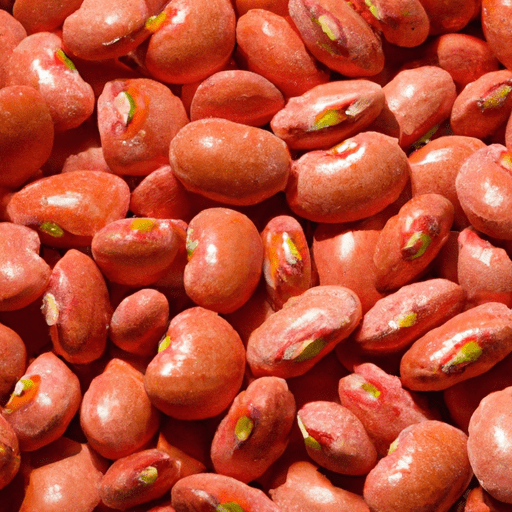Exploring the Versatile Great Northern Beans
When it comes to protein-packed legumes, Great Northern beans often fly under the radar. These small, creamy white beans have a subtle taste and a deliciously tender texture that make them a versatile ingredient in various culinary creations. In this blog post, we will dive into the world of Great Northern beans, exploring their taste, common uses in cooking, nutritional value, and uncovering some interesting facts and history along the way.
Taste and Texture
Great Northern beans, with their mild flavor and buttery undertones, offer a delicate taste that easily absorbs other flavors. They possess a smooth and velvety texture, making them a perfect addition to a wide range of dishes, from comforting soups to hearty stews.
Common Uses in Cooking
One of the best things about Great Northern beans is their incredible versatility in the kitchen. Here are some popular ways to incorporate them into your cooking:
1. Soups and Stews
Due to their tender texture and ability to soak up flavors, Great Northern beans are often used in soups and stews. They add a creamy richness and heartiness, making them a satisfying addition to comfort food classics like White Bean and Ham Soup or Tuscan Bean Stew.
2. Side Dishes
Great Northern beans can be transformed into delectable side dishes. Combine them with fresh herbs, olive oil, and lemon juice for a refreshing bean salad. Alternatively, toss them with sautéed vegetables or mix them with cooked grains for a nutritious and substantial side.
3. Vegetarian and Vegan Dishes
For those following a plant-based lifestyle, Great Northern beans are a valuable source of protein and fiber. From bean burgers to vegetarian chili, these beans bring both taste and substance to meatless recipes.
4. Dips and Spreads
Puree Great Northern beans with garlic, lemon juice, and olive oil to create a smooth and creamy dip or spread. This versatile base can be customized with various herbs and spices, making it an excellent alternative to traditional spreads.
Nutritional Value
Great Northern beans are not only delightfully satisfying but also packed with essential nutrients. Here’s a glimpse into their impressive nutritional profile:
Protein: Great Northern beans are an excellent source of plant-based protein, making them a valuable addition to vegetarian and vegan diets.
Fiber: Rich in dietary fiber, these beans support a healthy digestive system and help maintain stable blood sugar levels.
Iron: Great Northern beans supply a good amount of iron, contributing to the production of red blood cells and overall energy levels.
Potassium: With a notable potassium content, these beans play a role in maintaining proper heart function and healthy blood pressure.
Interesting Facts and History
Intriguing tales and facts about Great Northern beans:
Origin: Great Northern beans are believed to have originated in the region around North America’s Great Lakes, both in the United States and Canada.
Versatility: While Great Northern beans are often associated with American and European cuisines, they have made their way into dishes worldwide due to their adaptability and compatibility with various flavors.
Name Connection: The name “Great Northern” beans was inspired by the historic Great Northern Railway, which played a pivotal role in their distribution during the early 20th century.
Companion Crops: Great Northern beans are often grown alongside corn and squash to create a traditional Native American agricultural technique known as the “Three Sisters.”
Great Northern beans may not receive the same level of attention as other legumes, but their mild taste, creamy texture, and unmatched versatility make them a kitchen staple worth exploring. From soups and stews to side dishes and dips, these beans bring an element of comfort and nutrition to a variety of culinary creations. So go ahead, grab a bag of Great Northern beans and let your culinary creativity take flight!
Great Northern Beans
Origin: Great Northern beans, also known as Phaseolus vulgaris, belong to the family Fabaceae. They are native to the Americas, with their exact origin being uncertain. It is believed that Great Northern beans were first cultivated by Native Americans in the region that is now Mexico and the southwestern United States.
Common Uses: Great Northern beans are versatile and used in a variety of culinary dishes. They are often utilized as an ingredient in soups, stews, casseroles, and salads. Due to their mild flavor and creamy texture, they can be easily incorporated into various recipes. They are frequently used in Mediterranean, Mexican, and American cuisines.
Nutritional Benefits: Great Northern beans are highly nutritious. They are an excellent source of dietary fiber, which helps promote digestive health and can aid in weight management. These beans are low in fat and cholesterol-free, making them a healthy addition to a balanced diet. Great Northern beans also provide a good amount of plant-based protein, essential minerals like iron and potassium, and vitamins such as folate.
Unique Properties and Historical Significance: Great Northern beans are characterized by their small to medium size, oval shape, and white color. When cooked, they have a delicate flavor and a soft, creamy texture. Great Northern beans have been cultivated and consumed for centuries. They are a staple food in many traditional cuisines and have been an important part of indigenous diets in the Americas. Today, they are widely available and enjoyed by people around the world.




Use the share button below if you liked it.
It makes me smile, when I see it.